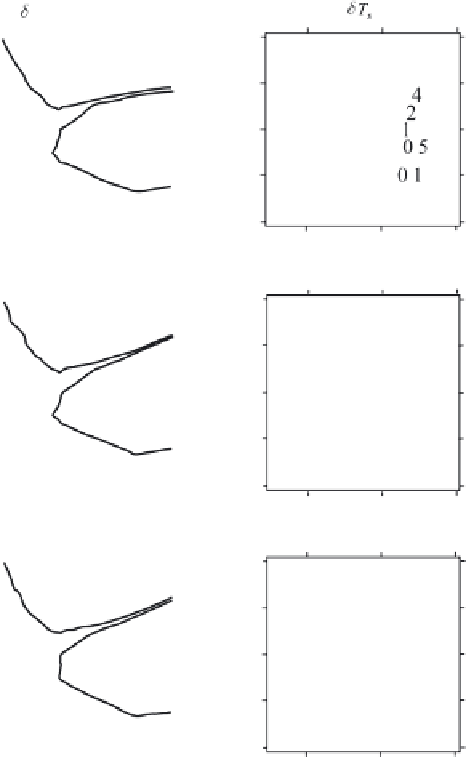Geoscience Reference
In-Depth Information
(
8
C)
(m
2
s
−2
)
1 m
(m
2
s
−2
)
10 m
(m
2
s
−2
)
100 m
(m)
(m)
Fig. 7.10 Range of parameters
β
0
τ
and
L
, for which turbulence energy pumping during a time
τ
(the values are indicated in the figure) results in (1) an increase (+) a decrease (-) of the maximum
temperature gradient by a quantity, exceeding 10% of the initial value; (2) a change of the surface
temperature. The figures at the isolines indicate the change in the surface temperature in degrees
Celsius. Calculations are carried out for various depths of the thermocline,
h
1
= 10
,
45 and 100 m
for
τ
= 10 s
Strong underwater earthquakes are known to be accompanied by residual de-
formations of the bottom, which serve as the source of tsunami waves. It would
be natural to assume the activation process of vertical exchange to take place over
the region of the bottom, subjected to the strongest deformations. The area of this
region is unusually identified with the area of the tsunami source, the average radius
of which,
R
(km), is related to the magnitude
M
by the empirical dependence:
lg
R
= 0
.
5M
−
2
.
1
.
(7.10)





















































































